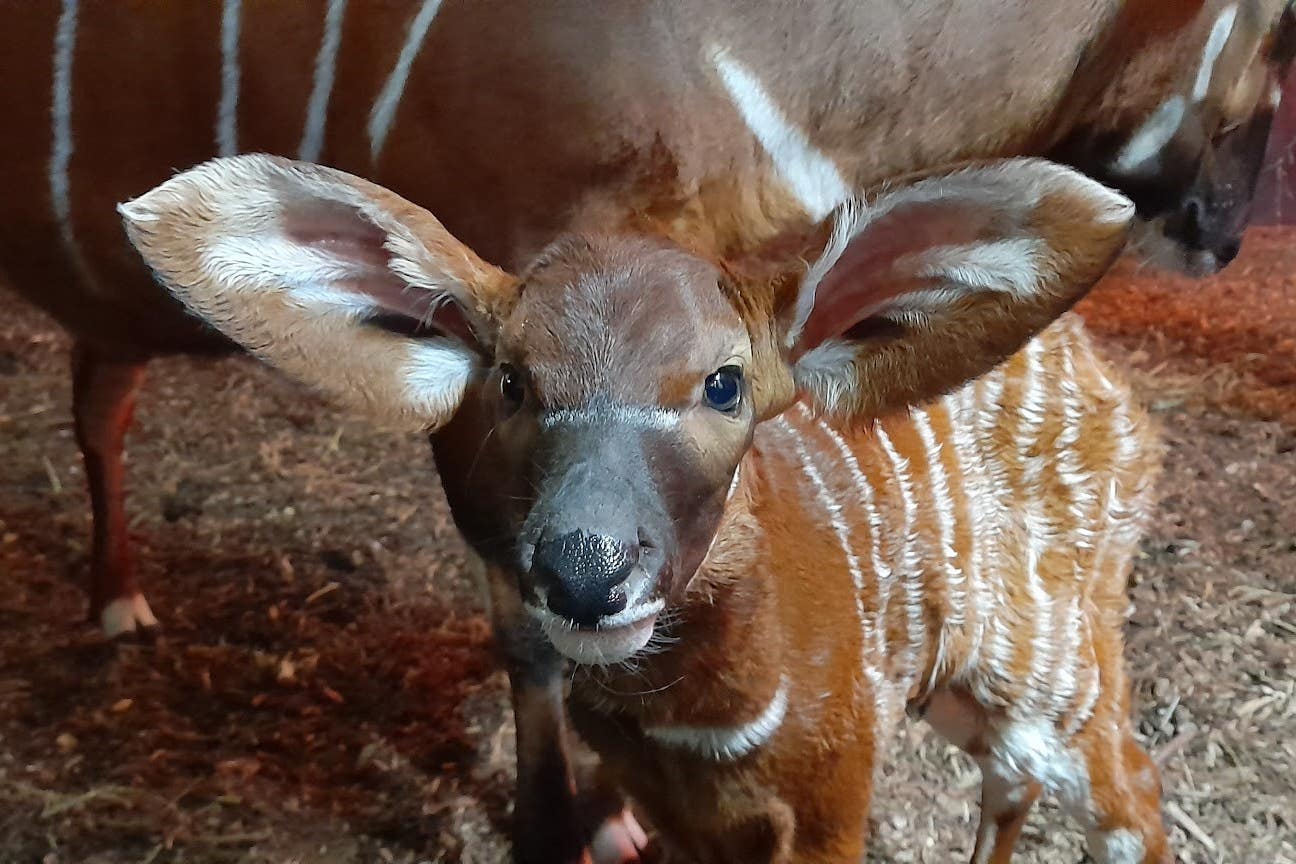Critically endangered mountain bongo birth delights zookeepers
It is thought that fewer than 100 of the animals remain in the wild.

Your support helps us to tell the story
From reproductive rights to climate change to Big Tech, The Independent is on the ground when the story is developing. Whether it's investigating the financials of Elon Musk's pro-Trump PAC or producing our latest documentary, 'The A Word', which shines a light on the American women fighting for reproductive rights, we know how important it is to parse out the facts from the messaging.
At such a critical moment in US history, we need reporters on the ground. Your donation allows us to keep sending journalists to speak to both sides of the story.
The Independent is trusted by Americans across the entire political spectrum. And unlike many other quality news outlets, we choose not to lock Americans out of our reporting and analysis with paywalls. We believe quality journalism should be available to everyone, paid for by those who can afford it.
Your support makes all the difference.Zookeepers are celebrating the birth of a floppy-eared, critically endangered mountain bongo.
Staff at Marwell Zoo, Hampshire, said the bongo calf is “doing really well” after being born to mother Canela and father Ituri on Monday.
The animals are a subspecies of the bongo, one of the largest forest antelopes, and it is thought that fewer than 100 of them remain in the wild.
Animal keeper Rhianna Worsell said: “Both mum, Canela, and her calf are doing really well.
“The calf has been seen up and about exploring its enclosure with Canela following close behind.
“Canela has been very attentive towards (it).
“We will leave them together to bond without any disturbance from us.”
The sex of the calf currently remains unknown.
Mountain bongos prefer areas with tall shrubs such as forest edges and areas where the forest has been disturbed, causing new growth.
They face a number of threats, including hunting with dogs and loss of habitat.
The species is found in four distinct areas of Kenya where they live in forests and highlands.